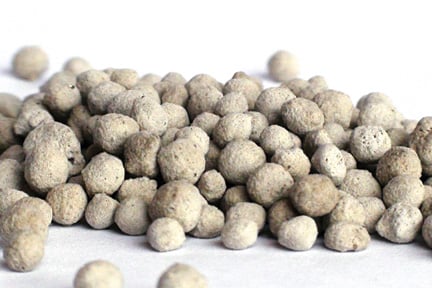Limestone is a sedimentary rock with many agricultural and industrial purposes. In order to prepare this naturally occurring mineral for use as a filler, fertilizer, or building material, many manufacturers utilize a drying step during limestone processing.
Why Dry Limestone?
Limestone is dried when subsequent manufacturing steps require a reduction in moisture in order to precondition the material properly. The following examples demonstrate such occurrences in various limestone processing options:
Limestone Mineral Processing
Limestone ore is mined, crushed, and then stockpiled before further processing occurs. If the limestone’s moisture content is too high, a rotary dryer is used to dry the material. This action can prevent issues such as material build-up in other limestone processing equipment.
Limestone Pelletization
Limestone pelletization requires a binder to adhere the material to itself in pellet form. However, the binder adds moisture, making a drying phase necessary for limestone processing. Rotary dryers and fluid bed dryers are excellent industrial dryer choices for pelletized limestone, with rotary dryers being a more robust choice.
Limestone Dryers
The most commonly used equipment for limestone drying is a rotary dryer (shown above). It can be used to dry both limestone ore and pelletized limestone. Also referred to as a limestone dryer, this piece of equipment is popular for use in many processing stages, because it is a reliable drying solution. The high volume functionality and robust build of a limestone dryer can easily withstand limestone’s processing demands. Additionally, the rotating motion and lifting flights within a limestone dryer ensures that the material is properly and evenly dried. Custom equipment options include:
- Customized flight design
- Customized linings
- Thicker shells for abrasion resistance
- Special burner options that limit emissions such as NOx and CO
Fluid bed dryers use pneumatic conveying to suspend limestone in a fluidized state. This exposes the entire material surface and efficiently cools it down. An advantage to using fluid bed dryers is that they are modular and smaller than rotary dryers. However, they are unable to polish granules and cannot accept a wide range of variability in feedstock, making them incompatible to certain applications.
Material Considerations When Drying Limestone
Abrasion
Limestone ore is abrasive; the bigger the rock, the more abrasion there will be. As a result, equipment customization may be required in order to ensure an optimized and long-lasting drying solution.
Clumping
Powdered limestone may clump if not properly dried, which is why many limestone manufacturers utilize a drying process before storing material. Powdered limestone may also produce dusting issues. In order to prevent such issues, pelletization is recommended.
Limestone Drying Benefits
The drying process accomplishes many benefits for limestone such as:
Enhanced Product Quality
Preconditioning a material for subsequent manufacturing stages creates a better final product. By correctly preparing the material at the very beginning, manufacturers ensure better limestone processing and improved production at every stage.
Improved Product Handling
Drying limestone ore removes moisture from the surface by hardening the material and avoiding equipment congestion in future steps. For powdered limestone, limestone dryers prevent issues such as clumping, making it easier to store and handle.
FEECO understands the value of customized equipment and processes, especially in applications that are vulnerable to the effects of moisture. For more information on FEECO’s extensive knowledge of limestone processing at any stage, contact us today!


